
Bifocal Lenses - See Clearly At Two Distances
As we age, the lens of our eye becomes less flexible and thicker, and the surrounding muscle fibers become less elastic. This can make it difficult to read small print, such as in newspapers, magazines, books, and text messages. This normal loss of the ability to focus at close distances, which usually begins around age age 40, is called presbyopia. Bifocal lenses are a traditional multifocal lens design that includes two prepscription zones - a distance prescription zone and a reading prescription - enabling individuals to see clearly as they age. They are more advanced and sophisticated than single vision lenses, and require precise measurement, customization, and craftsmanship by experienced professionals in order to provide clear vision at all distances. If you live in the Edmonton area and are in need of bifocal lenses, visit our optometrists and opticians today to begin seeing your absolute best.
Schedule An Exam Our Optometrists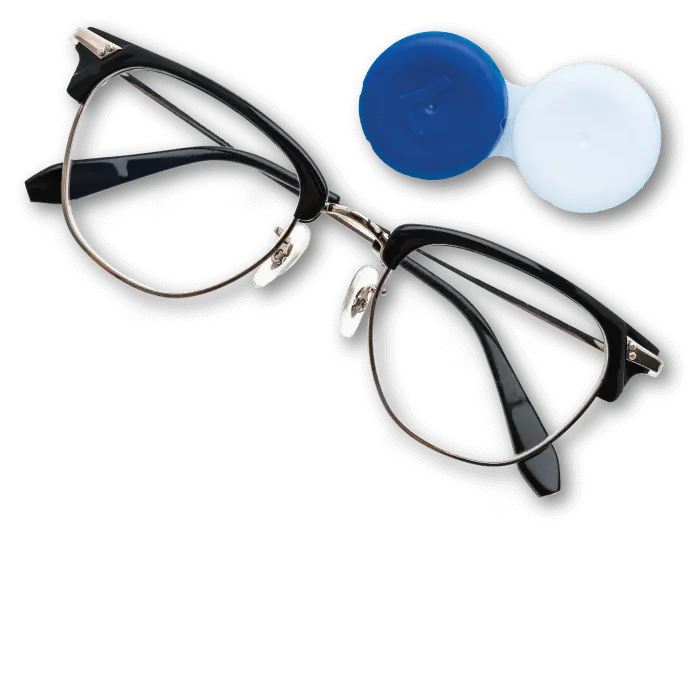
(780) 473-6123
Multifocal Eye Glasses in Edmonton.
What Are Traditional Bifocal Lenses?
Traditional bifocal prescription lenses, also known as lined bifocal lenses, are eye glass lenses that have two distinct lens powers separated by a visible line. Bifocals are typically prescribed for individuals who need glasses for both near (e.g., reading) and far (e.g., driving) vision and have a stronger prescription for one of these distances. The history of bifocals can be traced back to Benjamin Franklin, who is frequently credited with inventing the lenses in the late 18th century. Franklin, who was both nearsighted and farsighted, found that he was constantly switching between two pairs of glasses - one for reading and one for distance - and grew frustrated with the inconvenience. He addressed his problem by cutting his distance eye glass lenses in half and attaching the lower half to the upper half of his reading glasses, creating the first pair of bifocals.
Schedule A Bifocal Lens Fitting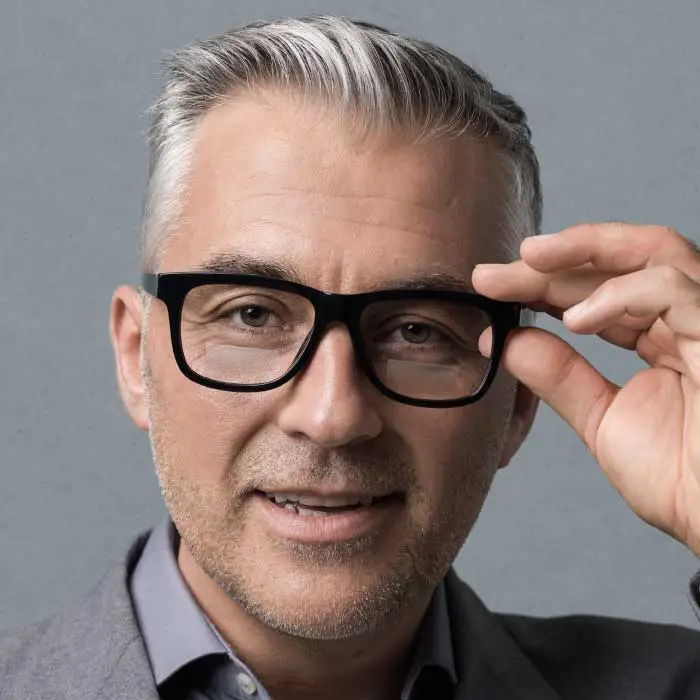
Multifocal Eye Glasses.
How Do Bifocal Lenses Work?
Bifocals work by having two prescriptions integrated in one lens, with the near vision prescription at the bottom of the lens and the far vision prescription at the top. Traditional bifocal lenses are typically made with a visible line separating the two prescriptions, which allows the wearer to switch between the two prescriptions by looking through the appropriate part of the lens. Bifocal wearers simply look slightly downward along their cheek line to obtain clear reading vision. Looking straight, along the horizontal plane, offers the clear distance vision needed for driving.
Schedule A Bifocal Eye Glass Consult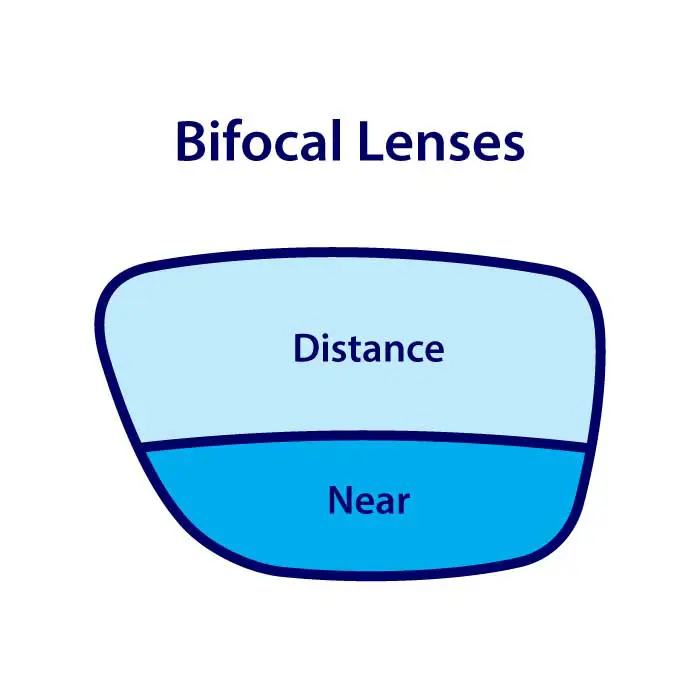
Traditional Bifocal Eye Glass Designs
Bifocal lenses from manufacturers such as Hoya, Zeiss, and Essilor, are often available at several different classes, each equipped with unique features and capabilities.
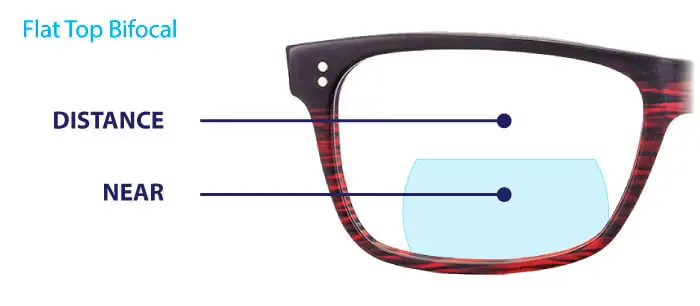
Flat Top (FT28) Bifocal Lens
- Easy Adaptation
- Width is 28 mm wide
- Lined Bifocal
- Distinct Jump Between Distance & Near
- Easy To Find Reading Zone
- Easy To Learn How To Wear
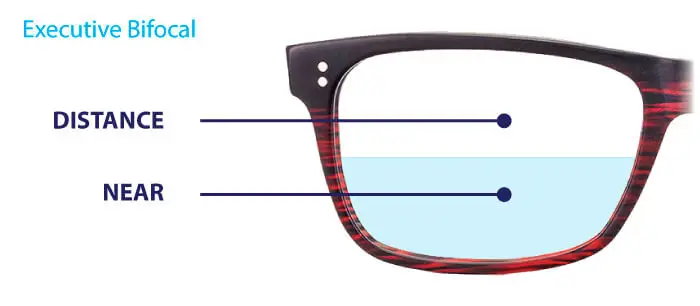
Executive (FT35) Bifocal Lens
- Easy Adaptation
- Reading Extends Across Entire Lens
- Widest Reading Area
- Lined Bifocal
- Known As Franklin Bifocal
- Heavier Than Standard Bifocals
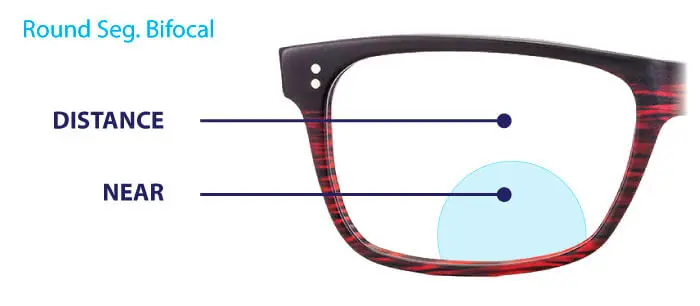
Round Bifocal Lens
- Easy Adaptation
- Round Shaped Reading Area
- Smaller Reading Zone
- Curved Lined Bifocal
- Less Noticeable Line
- Easy To Reach Reading Zone
Multifocal Eyeglasses.
Bifocal Lenses Are Not Progressive Lenses
It is important to note that progressive lenses differ from traditional lined bifocal eye glass lenses. Bifocal prescription lenses are a traditional type of multifocal lenses that feature distinct focal zones. Bifocal lenses are for individuals who need glasses for distance as well as reading. Instead of having a separate pair of single-vision glasses for each activity, bifocals are often a more suitable solution. Unlike single vision lenses, bifocals have more than one point of focus or viewing area (distance - driving, intermediate - computer, and near - reading) separated by a distinct, visible line. Bifocals have two points of focus and represent a traditional multifocal lens design.
Schedule V-eye-P Eyewear Fitting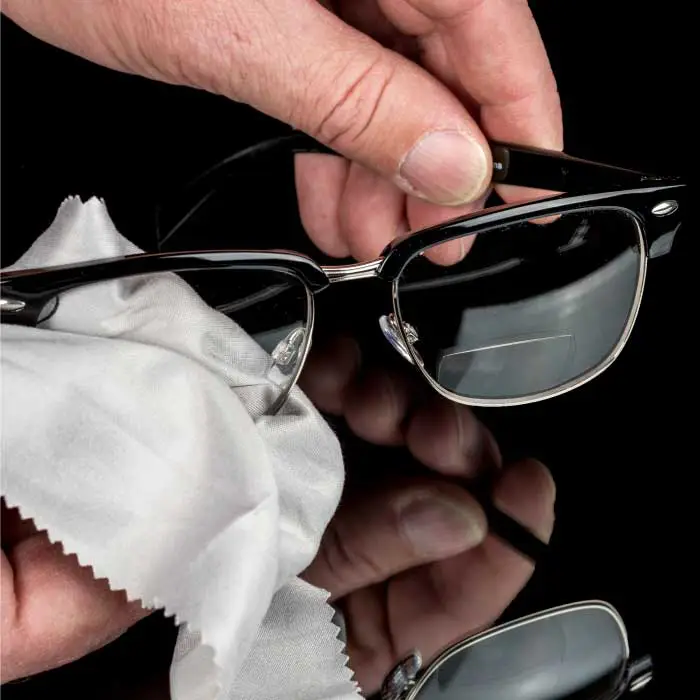

Traditional Multifocal Eye Glasses.
Benefits Of Bifocal Lenses
Due to it continuous, seamless design, bifocal lenses offer wearers several important functional and aesthetic benefits:
- Lined bifocal lenses provides individuals with clear vision at both near and far distances, which can assist those who need eye glasses for multiple tasks.
- Lined bifocal lenses are oftem more cost-effective than other types of multifocal lenses, such as progressive lenses.
- Lined bifocal lenses are easy to use, as the wearer simply needs to look through the appropriate part of the lens for the distance they are viewing.
- Lined bifocal lenses are widely available and can be easily purchased at most opticals.
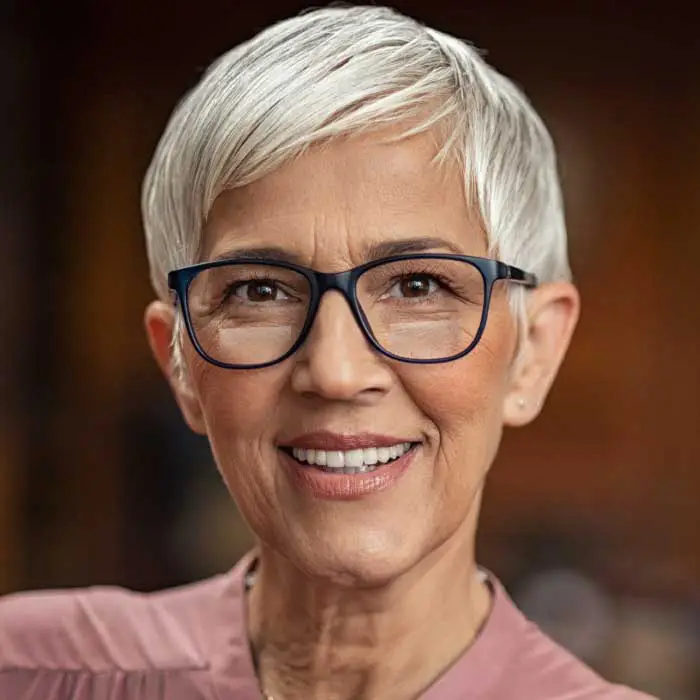
Multifocal Eye Glasses
Shortcomings of Bifocal Lenses
- Bifocals are only suitable for people who need correction for both near and far vision. They are not suitable for people with more complex vision issues, such as astigmatism.
- Image shift/jump is when the clarity and apparent position of objects abruptly change as the eyes pass across the visible lines in these traditional multifocal lenses.
- Bifocals can impact depth perception because the two prescriptions have different focusing points. This can make it difficult to judge distances accurately and be problematic for activities such as driving or sports.
- Individuals must adapt to bifocals because the brain must adjust to switching between the two prescriptions. Dizziness and headaches are common during the adaptation period.
- The visible line between the two prescriptions in a bifocal lens is often deemed unsightly, especially when no-line progressive lenses are available, and a strong indicator of age.
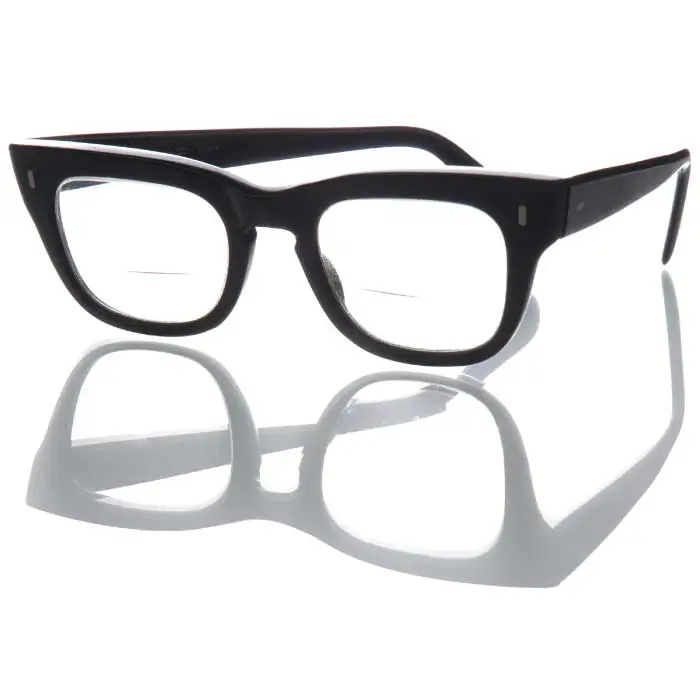
Modern Multifocal Lenses.
Progressive Lenses: An Alternative To Bifocal Lenses
Compared to bifocal lenses, the continuous, seamless design of progressive lenses offer individuals several important performance and aesthetic benefits:
- Progressive lenses provide clear, crisp vision at all distances - not just the 2 offered by bifocals.
- Progressive lenses eliminate the frustrating image shift/jump experienced with bifocals.
- Progressive lenses do not have the visible lines of bifocals, offering a more youthful appearance.
- Modern digital freeform progressive lenses can be personalized to an individual's favourite activities and unique lifestyle preferences.
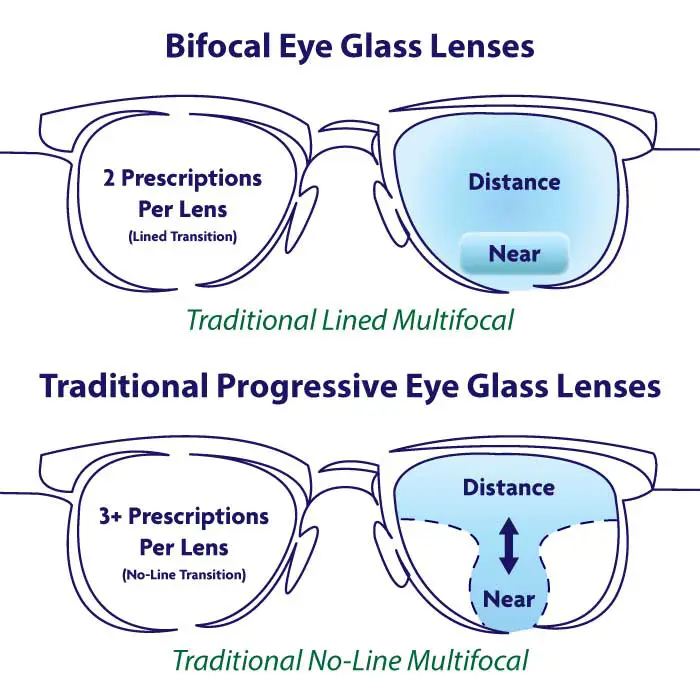
Bifocal vs. Progressive Lenses
A Comparison of Bifocal & Progressive Lens Features
| Feature | Bifocal Lenses | Progressive Lenses |
|---|---|---|
| Design | A visible line separates near and distance focal zones. | Gradual transition from near to intermediate to distance focal zones. |
| Seamless Transition | A distinct (i.e., discrete) jump between near and distance focal zones. | A seamless (i.e., continuous) progression between focal zones. |
| Available Prescriptions | Not suitable for complex vision requirements, such as astigmatism. | Suitable for most prescriptions. |
| Cosmetic Appeal | Visible lines can produce an unflattering age-defining look. | No visible lines offer a more aesthetic look. |
| Adaptation Period | Users may adapt more quickly to the distinct (i.e., discrete) segments. | May require an adaptation period to get used to the establish focal sweet spots. |
| Image Jump/Shift | Clarity and apparent position objects abruptly change as the eyes pass change focal zones. | Digital freeform progessives offer a wider field of vision without interruptions. |
| Field of Vision | Clear separation may create a more constrained visual field. | Digital freeform progessives offer a wider field of vision without interruptions. |
| Intermediate Vision | No portion of the lens devoted specifically to intermediate vision - it must share the near or distance segment. | Provides a dedicated zone for intermediate vision (i.e., computer distance). |
| Usage Variety | Versatile but may require head tilting to find the proper segment. | Suitable for various activities, including reading, computer work, and driving. |
| Customization Options | Limited customization options compared to progressives. | Can be customized for specific visual needs. |
| Cost | Often, more affordable than comparable progressive lenses. | Typically, more expensive due to more advanced technology, especially when digital freeform progressives. |
| Versatility | Suited for users who primarily switch between near and distance vision. | Ideal for those who need a range of focal lengths. |
Multifocal Eye Glasses.
Industry Leading Bifocal Lens Brands
Hoya, Zeiss, and Essilor are the top bifocal lens designers and manufacturers on the planet. Hoya is a Japanese company, Zeiss is German, and Essilor is French. Essilor recently merged with Luxottica and is now known as EssilorLuxottica. Although these three companies are leaders in the eyewear industry, their bifocal lens offerings, features, and technologies differ. For example, Hoya is the only company that offers Harder Than Glass Scratch Resistance and substrate-matched lenses coatings. Meanwhile, Zeiss is the only company that offers glass lenses, which have better optics than plastic lenses.
Schedule V-eye-P Eyewear Fitting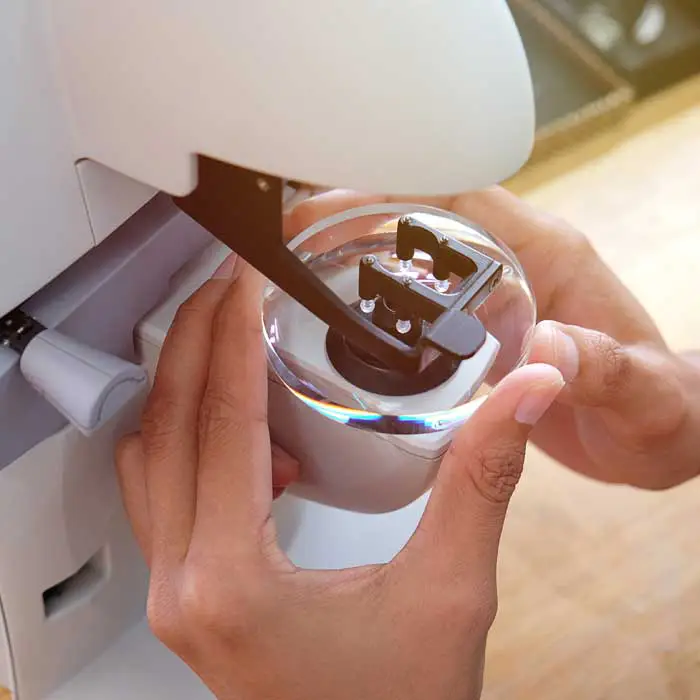
Multifocal Eye Glass Lenses.
Bifocal Lenses Require Precision Measurements
Contrary to what some online vendors may claim, crafting bifocal lenses that provide clear, high-definition vision requires numerous precise measurements. These measurements include pupillary distances for both near and distance focal lengths, the optical center, heights, vertex (the distance of the eye from the back of the lens), pantoscopic tilt (the angle of the lens from vertical), and wrap angle (the angle at which the lenses curve around the head). These measurements are unique to each person, taking into account individual biology, behavior, frame type, frame fit, and prescription. To get the most accurate and personalized measurements, it is important that the selected frame first be properly fitted and professionally adjusted and that modern digital tools be used.
Schedule A Professional Eye Glass Fitting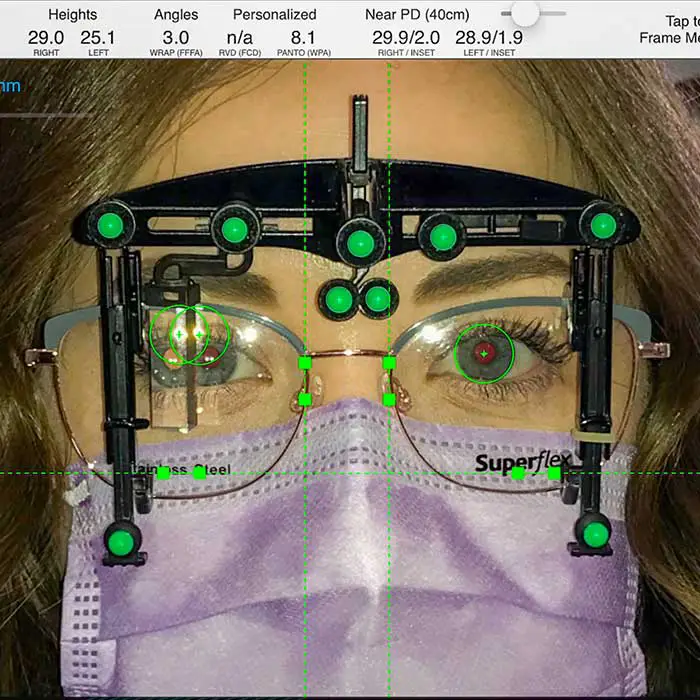
Multifocal Eyewear.
A Contact Lens Alternative to Bifocal Lenses
Multifocal contact lenses (including bifocal contacts) contain different power zones for near and far vision to correct for presbyopia as well as nearsightedness or farsightedness. Some multifocal lenses also correct for astigmatism. Bifocal contacts lenses include two prescriptions in the lens, while multifocal contact lenses incorporate a range of powers in the lens. These contact lenses are the equivalent to bifocal and progressive eyeglass lenses.
Schedule V-eye-P Contact Lens Fitting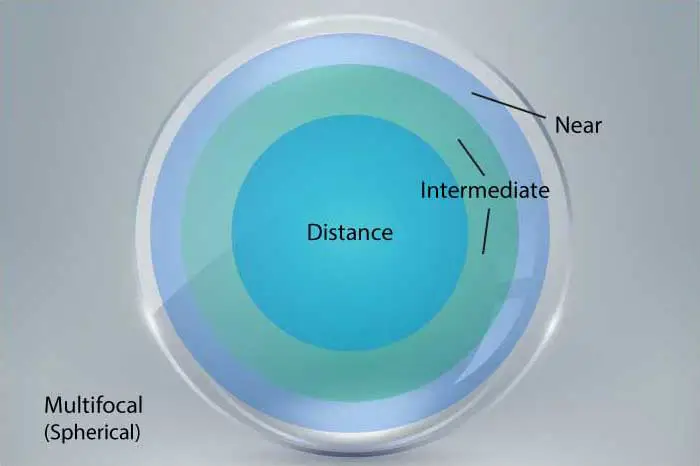
Prescription Lens Brands
Bifocal Lens Enhancements & Alternatives

Progressive Lenses
Looking of a multifocal lens with no visible lines between focal zones? Progressive lense from our Edmonton optical may be the solution for you.

Performance Lens Coatings
The performance and lifespan of your prescription glasses can be enhanced with anti-scratch and anti-reflection lens coatings.

Anti-Fatigue Lenses
Not yet 40, but experience tired and strained eyes when multitasking? See relief and relaxed vision with anti-fatigue glasses that make reading easy.
Frequently Asked Questions
Our Edmonton Optometrists
Searching for an optometrist in Edmonton? Our experienced Edmonton eye doctors use advanced modern technologies and devote upwards of 500% more time towards providing personalized patient care than elsewhere so that they can see more and ensure that you may never see less. Position yourself to see the future with a visit to our eye clinic and Edmonton's best eye care!

Dr. Jennifer Ash, OD
Dr. Jennifer Ash is the Resident Optometrist at Eye-deology Vision Care. Dr. Ash provides patient care 5 days a week. Read more about Dr. Ash.

Dr. Ruhee Kurji, OD
Dr. Ruhee Kurji is an Associate Optometrist at Eye-deology Vision Care. Dr. Kurji provides patient care Tuesdays & Fridays. Read more about Dr. Kurji.

Dr. Jade McLachlin, OD
Dr. Jade McLachlin is an Associate Optometrist at Eye-deology Vision Care. Dr. McLachlin provides patient care 5 days a week. Read more about Dr. McLachlin.

Dr. Tania Mathews, OD
Dr. Tania Mathews is an Associate Optometrist at Eye-deology Vision Care. Dr. Mathews provides patient care 2 days a week. Read more about Dr. Mathews.
Learn Why Our Edmonton Optometrists Are The Best!






